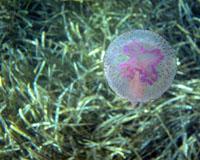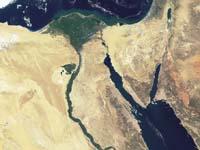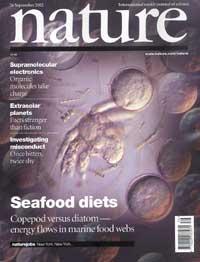Jellyfish, resentment of the waves
2007/08/11 Galarraga Aiestaran, Ana - Elhuyar Zientzia

Researchers have shown that, if it rains little in winter, the species Pelagia noctiluca is very abundant on the coasts of the Mediterranean. (Photo: George Reclos)
It is true that there are more and more people coming to the beaches, so it is possible that it is a simple impression, that is, maybe before there were big flocks of jellyfish on the coast, but as now there are many people on the beaches, they create more discomfort. The beaches of Euskal Herria, for example, usually come when the water is quite hot, that is, at the end of August and September, pushed by the current and the wind.
However, it is not only a matter of imagination, but scientists also believe that they have grown both in the Mediterranean and in the Atlantic Arc of Andalusia. Therefore, the Spanish Coastal Directorate has launched a special campaign to prevent jellyfish from damaging people and why they have increased.
Scientists have several hypotheses to explain the proliferation of jellyfish. However, they consider that there is not only one agent, but there are several agents who, united, have made jellyfish more abundant than before and come closer to the coast.
Sum of factors
One of the factors influencing the number of jellyfish arriving at the coast is the climate. In the Mediterranean it has been shown that if it rains little in winter, jellyfish approach the shore more easily. This has to do with the salinity of the waters and the buoyancy of the jellyfish. As is known, in the freshwater it is more difficult to float than in the brackish, so when the water of the coast is noticeably sweeter than that of the open sea, the jellyfish do not so easily approach the coast, although the wind pushes them towards it, as they lose buoyancy.
However, when it rains little in winter, rivers pour less water than normal into the sea and the saline concentration of coastal water does not vary. So nothing prevents the jellyfish from approaching the coast. Since the 1980s, scientists have found that, in the case of Pelagia noctiluca, there is a relationship between the amount of rain and the proliferation of jellyfish.
Another factor is oil pollution. In fact, where oil spills have occurred, there has been an increase in bacteria, as for some types of bacteria oil is an appropriate food. Of course, copepods that feed on these bacteria (some marine microscopic animals) also multiply and copepods are one of the main foods of jellyfish. Thus, in Alaska, for example, after the spill of Exxon Valdez, jellyfish have increased considerably.
Another type of contamination can cause increased jellyfish for the same reason. For example, in the Adriatic Sea and the Mar Menor lagoon, emissions of organic and inorganic compounds have contributed to the proliferation of bacteria. This has meant the loss of some species, not jellyfish, in which case the reverse occurred.
However, researchers believe that overfishing has caused jellyfish to increase both on the Mediterranean coast and probably throughout the peninsula. The first consequence of disproportionate fishing is the significant decline in populations of edible species. The anchovy of the Cantabrian is a clear example of this. The problem is that fish and jellyfish eat the same foods (copepods, crustacean larvae...), so if competition decreases, jellyfish has more food than before and multiplies.
In the Bering Sea, for example, the jellyfish population of the genus Chrysaora has increased 10 times due to the loss of fish species that were fished. Also in the streets of Namibia, a species of this genus has grown spectacularly in 15 years: before there were ten fish for each jellyfish and now three jellyfish for each fish.
The proliferation of jellyfish is due not only to the elimination of competitors but also to the reduction of predators. In fact, fish from the tuna family and other emigrants eat jellyfish, so the decline in their population causes an increase in jellyfish.
Adverse effects
Jellyfish that approach the beaches present important disadvantages, since people who circulate through the water or the shore are in danger of dying. Normally the poison of jellyfish has no serious consequences, but it is painful, so it forces beach lovers to walk carefully. From a more general point of view, they also harm tourism. Occasionally they have to prohibit access to water on a beach to avoid the danger of grip of jellyfish. This measure, however, drives away tourists and is detrimental to the local economy.
In addition, large jellyfish balances are also detrimental to fishing. On the one hand, they eat the same food as fish, and on the other, they fill the gaps of the nets, preventing fishing. Finally, apart from economic damage, the proliferation of jellyfish represents a decompensation of ecosystems.
We will see if the study launched by the Spanish Coastal Management reveals something and, in the meantime, check that you are well at sea if the transparent bag around you is made of plastic or gelatin!
Published in Gara.

Gai honi buruzko eduki gehiago
Elhuyarrek garatutako teknologia





